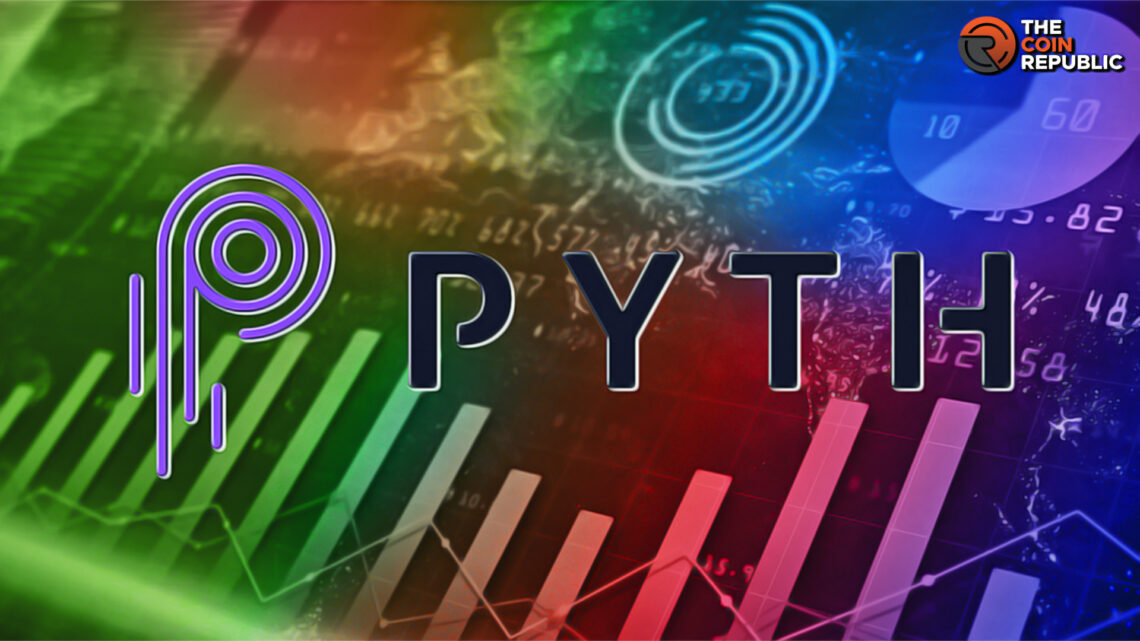- 1 Pyth Network is a Solana blockchain-based platform that provides a high-quality financial market for DeFi.
- 2 It gives real-time accurate price feeds for various assets like equities, ETFs, Fx, and Commodities.
Python Network is built on the Solana blockchain that offers high throughput and low latency confirming timely data delivery. The data on the network is sourced from different financial institutions and trading firms.
The network is built to link traditional financial markets with DeFi space promoting transparency and supporting various blockchain-based financial applications. It allows market participants to publish data on the chain for smart contracts to use.
Data providers submit the proprietary price information to Pyth’s Oracle system. This system accepts data from multiple providers for every price feed to improve the accuracy and authenticity of the system.
Working on PYTH Network and its Security
Pyth network allows the market participants to publish the price information on-chain for others to use. It works in 3 steps. The first step includes the submission of the price information from multiple publishers. After submission, the second step is combining all the prices and taking out the single aggregate by Pyth’s on-chain oracle.
The third step includes the application of the price information produced by the Oracle program. Pyth also allows users to pull prices onto the blockchain when needed. Those prices become publicly available for all on the chain.
The enhanced security is indicated as the Pyth software has undergone multiple audits from several firms. It offers the bug bounty program for reports of issues deployed code.
PYTH Tokenomics
PYTH Tokenomics shows the distribution of PYTH tokens in its ecosystem and network. The distribution of the PYTH is an important decision making the network decentralized, self-sustainable, and permissionless. The common purpose of the token-based governance system is to enable token holders to guide protocol development.
Pyth governance gives the power to make decisions regarding the network. It helps in making decisions like
- Determining the size of the update fees.
- Determining reward distribution mechanism.
- Approving the software updates.
- Determining how the new symbols update on the network.
The maximum supply of PYTH is 10,000,000,000. The initial circulating supply is 1,500,000,000. 85% of PYTH tokens are initially locked and locked tokens will unlock after 6,18,30, and 42 months after the initial token launch.
The tokenomics of PYTH shows that the total publisher reward is 22% from which the unlocked is 0.5% and locked is 21.5%. Publishers are responsible for publishing price data to Pyth protocol. The publisher reward allocation consists of reserved tokens for different mechanisms and grants encouragement programs for publishers to publish accurate and timely price data.
52% is for ecosystem growth (7% unlocked and 45% locked). In this, the funds are kept aside for the developers, researchers, educators, and contributors. Practical initiatives like research projects, supporting public education programs to increase awareness, and rewarding institutions and individuals to expand the Pyth network are included.
10% for protocol development (1.5% unlocked and 8.5% locked). Some infrastructure is needed to expand the protocol. The tools development for the protocol advancement is required. Hence, 10% will be utilized for that.
6% for community and launch (6% unlocked and 0% locked). The amount is kept aside for the initial launch and related activities and initiatives.
10% for private sales (0 unlocked and 10 locked). This category includes the 2 funding rounds which add value to the network as advisory and infrastructure support. These two funding rounds are closed. The allocation has been finalized.
Network Participants
There are 2 types of network participants- publishers and consumers. The publishers are the users who have full knowledge about the accurate market price. They publish the price feeds and earn fees in exchange.
Consumers on the other hand are the ones who read the price feed and include the data into smart contracts or dApps. In the process, consumers pay fees to the protocol to access the data.
How to Become a Publisher on Pyth Network?
The user has to connect with the Pyth data association and request the association to become a data provider. The market makers and the trading firms are allowed to become the publishers.
The data providers are recognized by the public key on the network and the prices are signed by the private keys. So it is essential to have a pair of keys and Solana provides that pair for this purpose.
Most of the data providers select to generate 2 separate keypairs one for testing and one for production. The user has to share both public keys with the Pyth Data Association.
PYTH Network Data
The PYTH has a price of $0.5388 today. It has a market cap of $822.15 Million and a volume of $257.68 Million. The self-reported circulating supply is 1.58 PYTH. The total supply of the coin is 10B Pyth. The fully diluted marketing cap is $5.39 Billion.
The all time high price was $0.6544 on November 20,2023 and the all-time low price was $0.2774 on November 20, 2023.

Steefan George is a crypto and blockchain enthusiast, with a remarkable grasp on market and technology. Having a graduate degree in computer science and an MBA in BFSI, he is an excellent technology writer at The Coin Republic. He is passionate about getting a billion of the human population onto Web3. His principle is to write like “explaining to a 6-year old”, so that a layman can learn the potential of, and get benefitted from this revolutionary technology.


 Home
Home News
News







